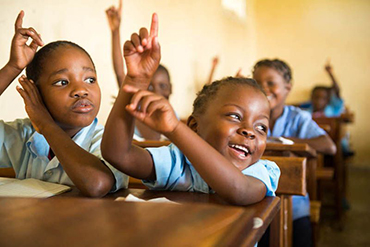Strengthening Social Service Systems for Vulnerable Children and Adolescents: A Conceptual Framework

Abstract:
There is emerging global consensus on the importance
of social service system strengthening for vulnerable children and adolescents in
Africa, but no agreement on the conceptual definition and the scope of social service
system strengthening, whether social service system strengthening is achievable
or not, how to move towards it, common indicators for measuring its progress, and
its long-term sustainability. This has resulted in various interpretations of the
concept, emanating from different disciplinary perspectives. This paper discusses
the various dimensions of social service system strengthening emerging from these
interpretations and argues for the need to pay attention to the complex interactions
across the various components of a social service system strengthening in the pursuit
for better social service delivery to vulnerable children and adolescents in
Africa. The paper highlights major components of a social service system strengthening
and proposes that these are utilized for measuring social service system strengthening
work.
Keywords: social services, systems strengthening, child
protection system, conceptual framework, Africa.
References:
[1]. African
Child Policy Forum. (2011) budgeting for children in Africa: Rhetoric, reality and
the scorecard. Supplement to the African Report on Child Wellbeing 2011. Retrieved
from www.africanchildforum.org/africanreport/
[2]. Ager,
A et al (2010) Mapping of child protection
M & E tools: Final report to UNICEF. New York, NY, USA: CPC Learning Network,
Mailman School of Public Health, Columbia University. Retrieved from http://www.cpcnetwork.org/resource/mapping-of-child-protection-metools-final-report-to-unicef/
[3]. Asare
N et al (2011). Policy and programming resource guide for child protection systems
strengthening in sub-Saharan Africa available online www.unicef.org/protection/files/Policy_and_Programming_Resource_Guide_for_CP_SS_9-2011.pdf
[4]. Bess,
A. et al (2011) Investing in those who care
for children: Social welfare workforce strengthening conference report. Washington,
DC, USA: United States Agency for International Development Retrieved from http://www.socialserviceworkforce.org/resources/investingthose-who-care-children-social-welfare-workforce-strengthening-conference-report
[5]. Brooks-Gunn
and Duncan (1997) The Effects of Poverty on Children available online http://www.princeton.edu/futureofchildren/publications/docs/07_02_03.pdf
[6]. Casey
Outcomes and Decision-Making Project. (1998). assessing outcomes in child welfare
services: Principles, concepts, and a framework of core outcome indicators. Englewood,
CO, USA: Casey Outcomes and Decision-Making Project
[7]. Davis,
R et al (2012) Strengthening child protection systems in sub-Saharan Africa: A working
paper for the Inter-Agency Group on Child Protection Systems in Sub-Saharan Africa
available file:///E:/strengthening_child_protection_systems_in_sub-Saharan_Africa_-_August_2012_.pdf
accessed 27/12/17
[8]. Davis,
R. (2009) Human capacity within child welfare
systems: The social work workforce in Africa. Washington, DC, USA: United States
Agency for International Development available online http://www.socialserviceworkforce.org/resources/human-capacity-within-child-welfare-systems-socialwork-workforce-africa
[9]. Global
Social Service Workforce Alliance. (n.d.). Who is the social service workforce?
[Website]. Retrieved from http://www.socialserviceworkforce.org/workforce
[10]. Global
Social Service Workforce Alliance. 2015. Para professionals in the social service
workforce: Guiding principles, functions and competencies, 1st Edition. Retrieved
from http://www.socialserviceworkforce.org/system/files/resource/files/Para%20Professional%20Guiding%
20Principles%20Functions%20and%20Competencies.pdf
[11]. Hatt,
L., Johns, B., Connor, C., Meline, M., Kukla, M., & Moat, K. (2015). Impact
of health systems strengthening on health. Bethesda, MD, USA: Health Finance &
Governance Project, Abt Associates.
[12]. Klasen,
S. 2000. "Measuring Poverty and Deprivation in South Africa." Review of
Income and Wealth 46 (1):33-58
[13]. Measure
Evaluation (2017) National Social Service Systems for OVC: Framework for Planning
and M&E available online file:///E:/national%20systems%20strengtheinining%20USAID.pdf
accessed 27/12/17
[14]. PEPFAR
(2012) Guidance for orphans and vulnerable children programming. Washington, DC,
USA: PEPFAR. Retrieved from https://www.pepfar.gov/documents/organization/195702.pdf
[15]. South
African Development Community (SADC). (2011) Minimum package of services for orphans
and other vulnerable children and youth. Retrieved from http://www.repssi.org/presentations/SADC_Minimum_Package_of_Services.pdf
[16]. UNICEF
(2014a). “Child Poverty in the Post-2015 Agenda.” UNICEF Issue Brief. New York:
UNICEF.
[17]. UNICEF
(2014b). Assessing child-sensitivity in social protection. A toolkit for social
transfers. Version 1.0. Retrieved from http://socialprotection.org/sites/default/files/publications_files/Assessing_childsensitivity_in_social_pr%20(1).pd
[18]. UNICEF
(2011) A Multidimensional Approach to Measuring Child Poverty in the Social and
Economic working paper available online file:///E:/A_Multidimensional_Approach_to_Measuring_Child_Poverty(2).pdf
accessed 27/12/17
[19]. UNICEF
(2005) Childhood under Threat: State of the World’s Children 2005. UNICEF NY www.unicef.org/
[20]. UNDP.
2014. “Human Development Report 2014. Sustaining Human Progress: Reducing Vulnerabilities
and Building Resilience.” HDR. New York.
[21]. Witter,
S. et al (2004) Taking Better Care? Review of a Decade of Work with Orphans and
Vulnerable Children in Rakai, Uganda. London: Save the Children.
[22]. Wessells,
M. (2009) what are we learning about protecting children in the community? An inter-agency
review of the evidence on community-based child protection mechanisms in humanitarian
and development settings. Retrieved from http://www.unicef.org/wcaro/What_We_Are_Learning_About_Protecting_Children_in_the_Communi
ty_Full_Report.pdf
[23]. Wulczyn,
F., Daro, D., Fluke, J., Feldman, S., Glodek, C. and Lifanda, K. (2010) Adapting
a Systems Approach to Child Protection: Key Concepts and Considerations. New York:
UNICEF.
[24]. WHO (2010)
Monitoring the Building Blocks of Health Systems: A Handbook of Indicators and Their
Measurement Strategies available online http://www.who.int/healthinfo/systems/WHO_MBHSS_2010_full_web.pdf
accessed 27/12/2017
[25]. WHO (2007)
Everybody business : strengthening health systems to improve health outcomes : WHO’s
framework for action available online file:///E:/everybodys_business.pdf accessed
27/12/17
[26]. WHO (World
Health Organization) and ISPCAN (International Society for the Prevention of Child
Abuse and Neglect) (2006) Preventing Child Maltreatment. A Guide to Taking Action
and Generating Evidence. Geneva: WHO.
[27]. World
Bank. (2017). Overview: Social protection. (Website). Washington, DC, USA: World
Bank. Retrieved from http://www.worldbank.org/en/topic/socialprotection/overview#1
[28]. WHO (2010)
monitoring the building blocks of health systems: A handbook of indicators and their
measurement strategies. Geneva, Switzerland: WHO. Retrieved from http://www.who.int/healthinfo/systems/WHO_MBHSS_2010_full_web.pdf.
[29]. Yaqub,
Shahin. 2002. "‘Poor children grow into poor adults’: harmful mechanisms or
over-deterministic theory?" Journal of International Development 14 (8):1081-1093.

